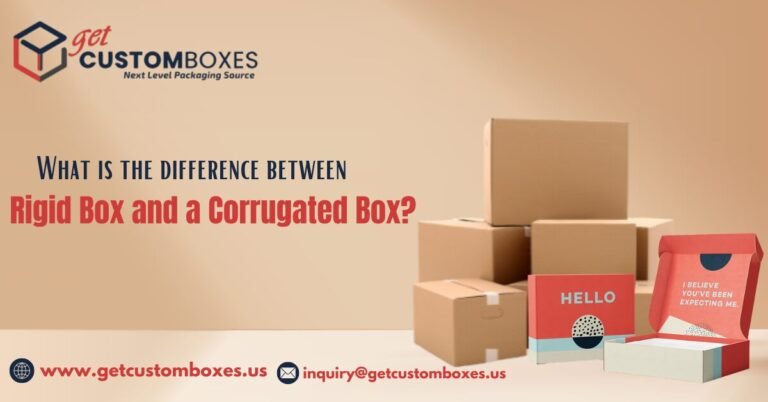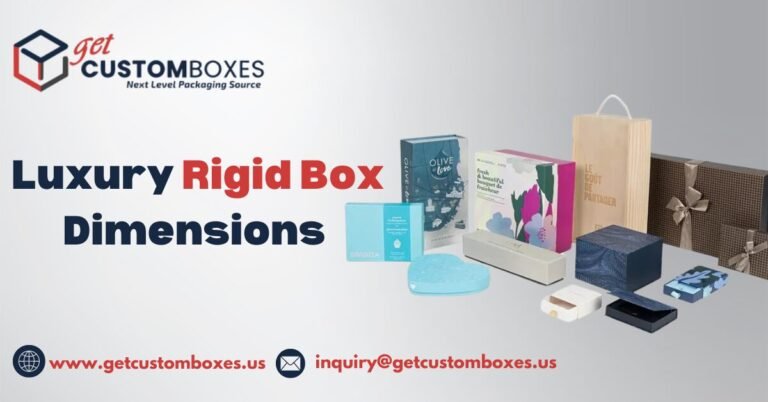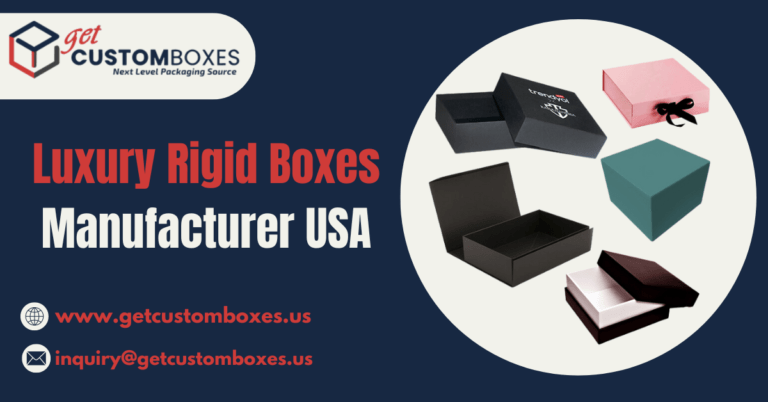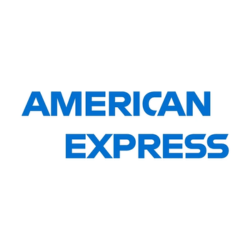What are cardboard boxes made of? Unveiling the Building Blocks of Essential Packaging
Cardboard boxes are ubiquitous in our day-to-day lives. From handing over groceries to housing treasured electronics, these flexible packing boxes play a critical role in protecting and transporting goods. But have you ever stopped to marvel? What exactly are cardboard boxes made of?
Get Custom Boxes, the main issuer of custom cardboard boxes, delves into the charming world of cardboard composition. We’ll discover the important materials and manufacturing tactics that bring these sturdy packing boxes into existence.
The Foundation: Paper and Pulp
At the coronary heart of every cardboard box lies paper, a familiar fabric made from timber pulp. Trees, primarily softwoods like pine and spruce, are the number one source of this pulp. The wood undergoes a pulping process wherein it’s shredded into tiny fibers. These fibers are then delicately wiped clean and mixed with water to form a slurry.
The next step involves spreading the slurry onto a forming machine, which shapes it into a wet sheet. This sheet is then pressed and dried to create the base paper for cardboard.
Building Strength: The Power of Corrugated Layers
While paper presents a primary shape, cardboard boasts superior strength and rigidity. This is executed via a completely unique layering method known as corrugation.
The Corrugated Medium: The core of a cardboard field is the corrugated medium, additionally known as the fluting. This wavy, internal layer is commonly made from recycled paper pulp. The flutes’ shape, comparable to a sequence of related arches, acts like miniature beams, imparting amazing stacking power and cushioning to packaged gadgets.
The Liners: Encasing the corrugated medium are two flat sheets of paper referred to as liners. These liners, regularly crafted from virgin or recycled paper fibers, offer an easy surface for printing, labeling, and branding. The outer liner, usually crafted from stronger Kraft paper, complements the box’s durability and protects the contents from outside factors.
The Glue that Binds: To create a cohesive unit, the corrugated medium is securely bonded to the liners using specialized adhesives. These adhesives, regularly starch-primarily based, are selected for their power and potential to face up to varying temperatures and managing conditions.
Customization and Sustainability: A Focus at Get Custom Boxes
Get Custom Boxes recognizes the growing importance of sustainable packaging solutions. We make use of a sizable portion of recycled paper content in our cardboard manufacturing, minimizing environmental impact.
Furthermore, we provide an extensive range of customization alternatives. From the thickness and flute size of the corrugated medium to the form of paper used within the liners, we cater to your precise packaging needs. Our custom printing skills will let you customize your packing boxes with brand brands, product statistics, or even eye-catching designs.
What are cardboard boxes made of? Unveiling the Building Blocks of Essential Packaging
Cardboard boxes are ubiquitous in our daily lives. From delivering groceries to housing precious electronics, those flexible boxes play an important role in delivering and transporting goods. But have you ever stopped to wonder: What exactly are cardboard boxes made of?
Get Custom Boxes, a leading issuer of custom cardboard packing boxes, delves into the captivating world of cardboard composition. We’ll discover the key substances and manufacturing tactics that bring those sturdy boxes to life.
The Foundation: Paper and Pulp
At the coronary heart of each cardboard field lies paper, a familiar cloth crafted from timber pulp. Trees and large softwoods like pine and spruce are the number one source of this pulp. The wood undergoes a pulping process where it is shredded into tiny fibers. These fibers are then refined, wiped clean, and combined with water to form a slurry.
The next step includes spreading the slurry onto a forming system, which shapes it into a wet sheet. This sheet is then pressed and dried to create the base paper for cardboard.
Building Strength: The Power of Corrugated Layers
While paper offers a primary shape, cardboard boasts superior electricity and stress. This is finished using a completely unique layering method known as corrugation.
The Corrugated Medium: The middle of a cardboard box is the corrugated medium, also referred to as the fluting. This wavy, internal layer is generally made from recycled paper pulp. The flutes’ form, such as a chain of connected arches, acts like miniature beams, providing superb stacking power and cushioning to packaged items.
The Liners Sheets: Encasing the corrugated medium are two flat sheets of paper known as liners. These liners, frequently crafted from virgin or recycled paper fibers, offer an easy floor for printing, labeling, and branding. The outer liner, generally made from more potent Kraft paper, enhances the box’s durability and protects the contents from external factors.
The glue that is used as adhesive: To create a cohesive unit, the corrugated medium is securely bonded to the liners with the use of specialized adhesives. These adhesives, frequently starch-based, are chosen for their power and capacity to withstand various temperatures and managing conditions.
Customization and Sustainability: A Focus at Get Custom Boxes
GetCustomBoxes acknowledges the developing significance of sustainable packaging answers. We utilize a large portion of recycled paper content in our cardboard production, minimizing environmental impact.
Furthermore, we offer a huge range of customization alternatives. From the thickness and flute size of the corrugated medium to the sort of paper used within the liners, we cater to your particular packaging needs. Our custom printing capabilities let you customize your boxes with brand names, product records, and even captivating designs.
Beyond the Basics: Additional Materials
While the center additives of cardboard boxes are paper and adhesives, additional materials can be incorporated to beautify specific functionalities. Here are a few examples:
Wax Coatings: For moisture resistance, a thin layer of wax can be applied to the outer liner. This is particularly useful for packaging merchandise liable to moisture damage.
Laminates: A plastic film lamination may be added to offer superior protection against moisture, grease, and chemicals. This is frequently used for food packaging applications.
Varnishes: To create a smooth or matte finish, varnishes may be applied to the outer liner. This complements the visible attraction of the box and can also provide a few stages of scuff resistance.
By gaining expertise in the substances and tactics involved in cardboard field manufacturing, you gain a deeper appreciation for the workhorses of the packaging enterprise. Get Custom Boxes stays committed to providing top-notch, customizable cardboard packing boxes that are both purposeful and environmentally accountable. So, the next time you come upon a cardboard box, take into account the fascinating tale behind its creation!
How are cardboard boxes made? A Look Inside the Production Process
Cardboard packing boxes are the unsung heroes of our day-to-day lives. From safeguarding your breakfast cereal to handing over that new pair of shoes, those robust boxes maintain merchandise included during their journey. But have you ever wondered how these seemingly simple boxes come to life?
Get Custom Boxes, a leading provider of custom cardboard boxes, lifts the lid on the captivating system of cardboard box manufacturing. We’ll discover the important steps involved in reworking uncooked substances into the reliable boxes you rely on.
From Pulp to Paper: The Foundation of Cardboard
The journey starts off with wooden pulp, frequently sourced from sustainable forestry practices. This pulp, derived from timber like pine and spruce, undergoes a series of processes to emerge as paper. The timber fibers are broken down, cleaned, and combined with water to form a slurry. This slurry is then spread onto a forming device, which shapes it into a moist sheet. Finally, the sheet is pressed and dried, resulting in cardboard inside the base paper.
Building Strength: The Science of Corrugation
While paper provides a fundamental structure, cardboard boasts superior energy and stress. This is executed through a completely unique layering approach referred to as corrugation.
The Corrugated Medium: The heart of a cardboard field is the corrugated medium, also referred to as the fluting. This wavy internal layer is typically crafted from recycled paper pulp. The flutes’ shape, similar to linked arches, acts like miniature beams, imparting extraordinary stacking power and cushioning to the packaged gadgets.
The Liners: Encasing the corrugated medium are two flat sheets of paper referred to as liners. These liners, frequently made from a combination of virgin and recycled paper fibers, provide an easy surface for printing, labeling, and branding. The outer liner, usually crafted from more potent Kraft paper, enhances the field’s durability and protects the contents from external elements.
The Bonding Agent: To create a cohesive unit, the corrugated medium is securely bonded to the liners with the use of specialized adhesives. These adhesives, which are regularly starch-based, are chosen for their energy and ability to withstand varying temperatures and dealing with situations.
Conclusion
In conclusion, cardboard boxes, even though seemingly easy, are the end result of a captivating manufacturing process. From wood pulp to paper, after the addition of a strategically fashioned corrugated medium and liners, those boxes offer each other safety and a canvas for personalization. Get Custom Boxes utilizes this information to craft tremendous cardboard boxes tailor-made to your desires. Whether you require precise thickness or beautiful branding, we can offer the correct method to make sure your merchandise is brought in appropriately and leaves an enduring impression.














